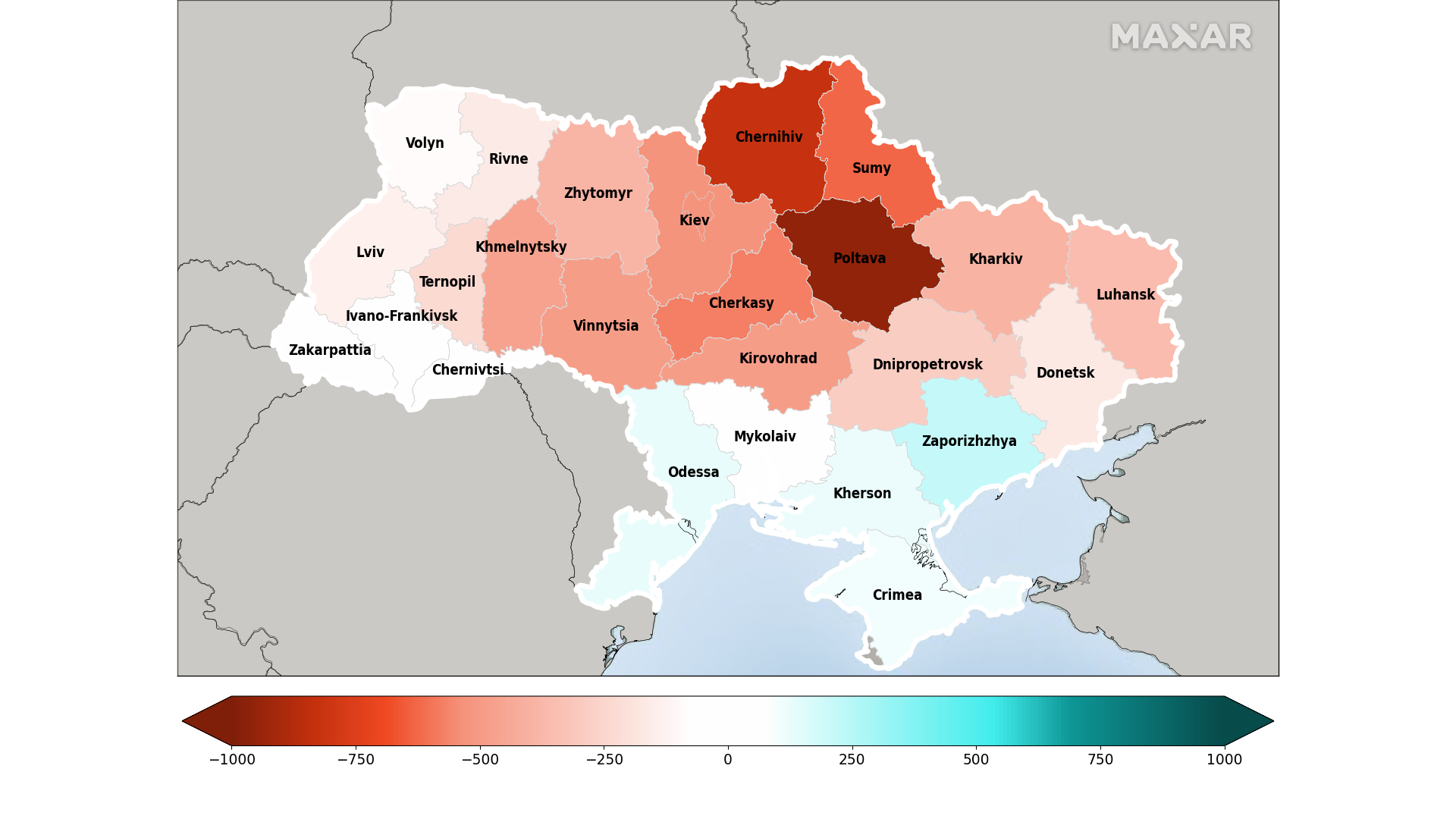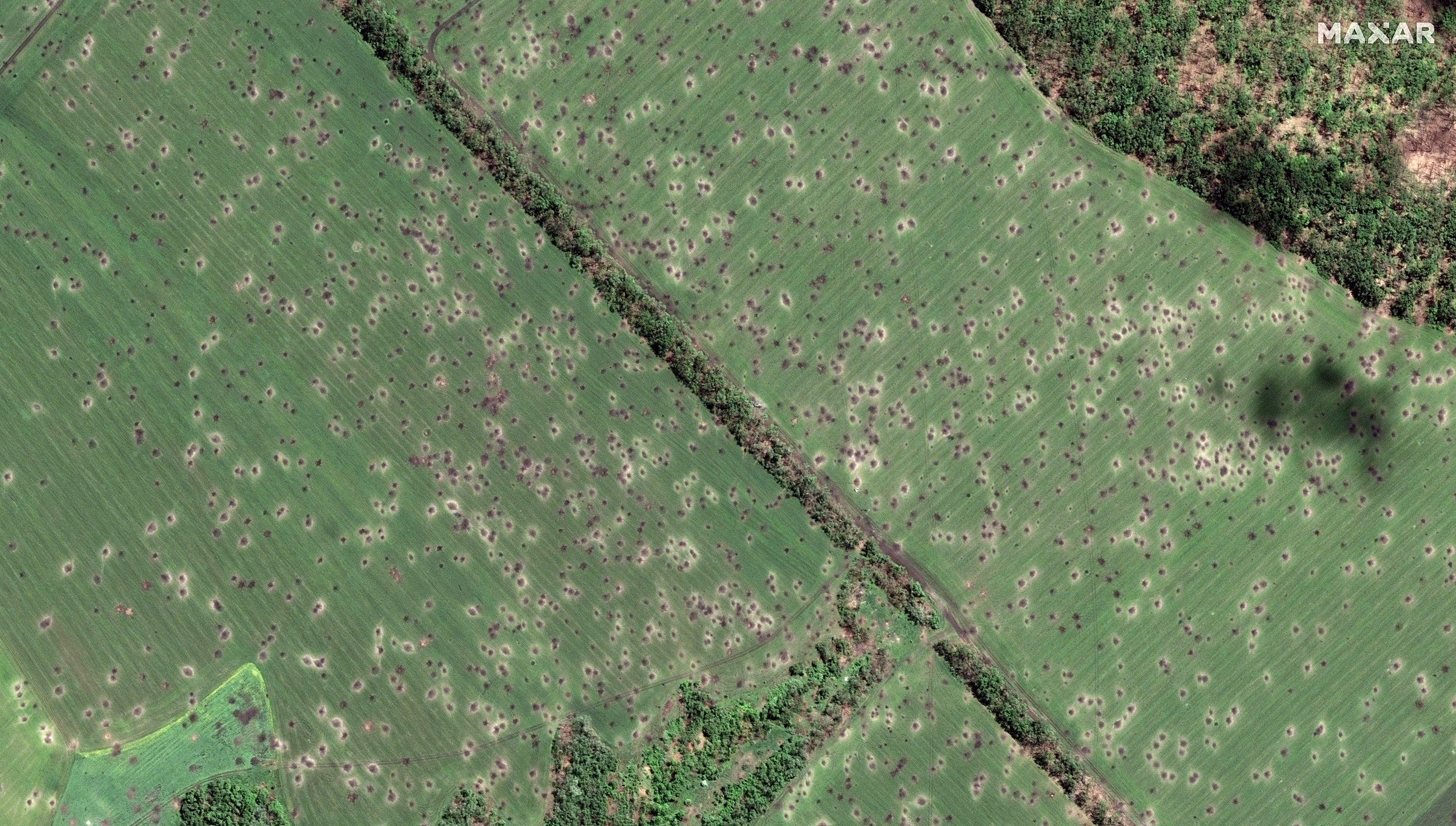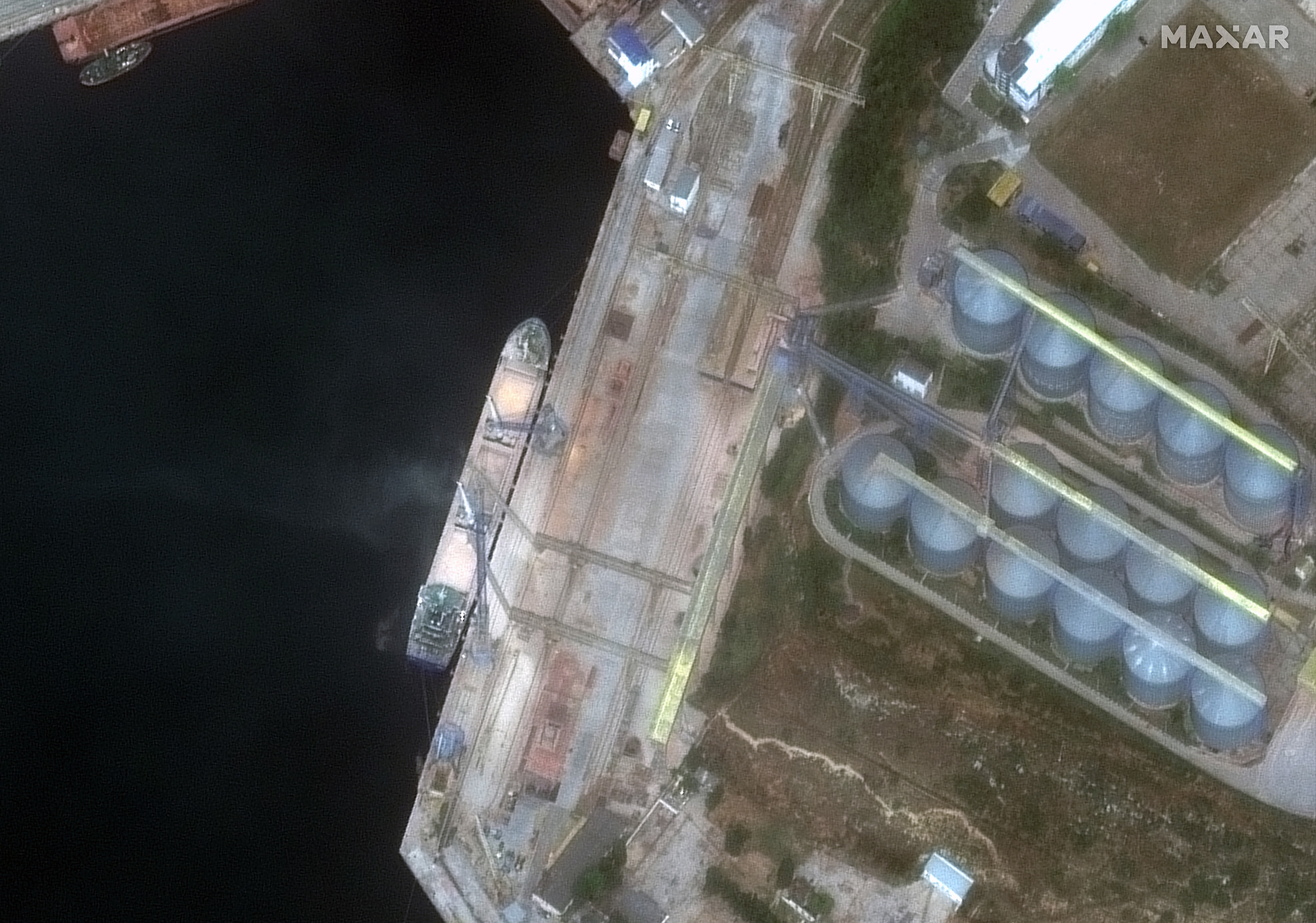
Ukraine’s Minister of Agrarian Policy promoted the country’s agriculture capabilities in a March 2021 Atlantic Council article: the country’s active agricultural area is larger than Italy and it is one of the world’s top three grain exporters. But, Ukraine’s claim as the “breadbasket of Europe” is threatened by Russia’s invasion, which started in February 2022 and is disrupting the planting of spring crops and the shipping of existing grain inventories.
Maxar’s WeatherDesk, an on-demand product that transforms regularly changing weather data into actionable insights, used MODIS imagery from NASA and analyzed normalized difference vegetation index (NDVI) time series data to develop the below assessment of Ukraine’s crops as of early June 2022. The highlights include:
- Compared to 2021, Ukrainian farmers planted 30% less spring acreage in 2022.
- WeatherDesk predicts the 2022 production of corn to be down 54% and production of sunflowers to be down 40% when compared with the 2021 growing season.
- Russians continue to take grain from Ukraine and transport it to other regions of the world.
Spring planting assessment
Ukraine usually plants corn and sunflowers in April and May for harvesting in September and October. There are many factors that disrupted this year’s planting season, including farmers who left the fields to defend their country, farmers who couldn’t plant due to fighting in the area, and the availability of seeds.
Compared to 2021, farmers planted 30% less acreage in 2022, a difference of more than 5,800,000 hectares (14.3 million acres). The oblasts, or regions, with the biggest difference in acreage planted between 2021 and 2022 are:
- Chernihiv (-68.8%)
- Zhytomyr (-67.2%)
- Rivne (-64.1%)
- Poltava (-63%)
- Sumy (-62.2%)
Most of these oblasts are in northern Ukraine along the Russian and Belarus borders, where Russian forces started their invasion.

The map above shows how each Ukrainian oblast’s spring planting compares to 2021’s growing season. The greatest deficit in planting is represented by dark red, while greater planting than usual is represented by teal.
WeatherDesk also assessed the crop health across Ukraine using NDVI, which is a scientific process for looking at remote sensing data to determine how much green vegetation is present at a particular location. Across Ukraine, NDVI values are the same or slightly better in 2022 than in 2021. This data tells Maxar analysts that though planting has been significantly affected, crops planted in 2022 are growing at a typical rate. It is still early in the growing season, however, factors such as weather, ongoing fighting and the availability of fertilizer and other inputs may cause changes in the coming weeks.

The above Maxar WorldView-2 image shows fields northwest of Slovyansk, Ukraine, peppered with artillery craters on June 6, 2022.
WeatherDesk predicts production of 19.3 million metric tons (MMT) of corn and 10.6 MMT of sunflowers this growing season, which would represent a decline of 54% for corn and 40% for sunflowers versus the 2021 growing season.
Harvested crop transportation
The Maxar News Bureau has previously released high-resolution satellite imagery showing two Russian-flagged bulk carrier ships docked in the Russian-controlled Crimean port of Sevastopol and being loaded with grain (below left). Days later, Maxar satellites collected images of the same ships docked in Syria, with their hatches open and semi-trucks lined up ready to haul the grain away (below right).

This does not appear to be an isolated incident. A new Maxar satellite image (below) from June 12, 2022, shows a different ship being loaded with grain in Sevastopol.

Ukrainian farmers told NPR that grain silos at ports are still full of last year’s crop because the Russian blockage is preventing the grain from exportation. Farmers are struggling to determine where to put this year’s crop, if they can harvest it.
Ukrainian agriculture’s impact on the world
The Food and Agriculture Organization of the United Nations (FAO) has run simulations on how the world food supply will be affected if Ukraine faces long-term disruption to its agriculture industry. The simulations show the global number of people facing food insecurity could rise from an estimated 181 million in 2022 to 189-194 million people in 2022/2023, with the most pronounced increases in Asia-Pacific, followed by sub-Saharan Africa, and the Near East and North Africa.
Additionally, FAO tracks how food prices are affected by the war in Ukraine. The FAO Cereal Price Index, which monitors international wheat prices, shows that May 2022 was the fourth consecutive month of rising prices, and prices are 29% higher in May 2022 compared with May 2021. Instability in food prices can lead to further unrest in other parts of the world, even those that may not receive agricultural products directly from Ukraine.
Actionable weather insights
Maxar’s WeatherDesk delivers insights on constantly changing weather data to help businesses make better decisions.
If you are a member of the media interested in using this information and graphics, please fill out the News Bureau inquiry form.